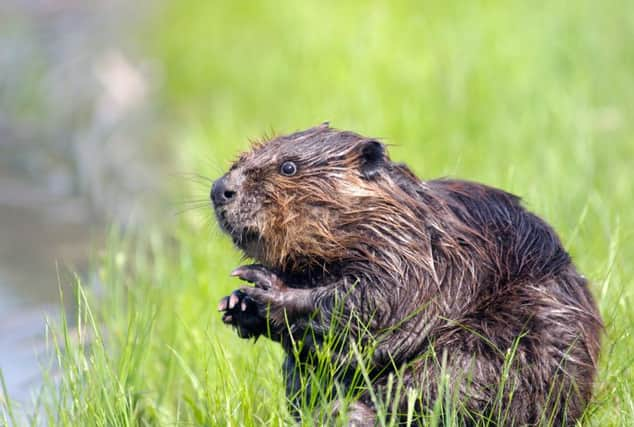National Trust backs calls to bring back beaver to Scottish countryside


The Trust publishes its policy statement today setting out its position on the return of the mammal to the Scottish countryside after an absence of more than 400 years.
Its backing comes in advance of Scottish Natural Heritage submitting its report on the reintroduction of the species to the Scottish Government.
Advertisement
Hide AdAdvertisement
Hide AdSome angling groups and fishermen, including former England cricketer Ian Botham, have voiced concerns over bringing the beaver back into the wild but the Trust is the latest and largest conservation body to back the reintroduction.
It follows an official £2 million five-year trial at Knapdale in Argyll and research into more than 150 beavers “unofficially” living in the River Tay and Earn areas.
The beavers have been in Tayside since at least 2006, and are thought to originate either from escapes or illegal releases from private collections.
They have been found in rivers and lochs stretching from Kinloch Rannoch, Kenmore and Crieff in the west to Forfar, Perth and Bridge of Earn in the east.
In March 2012, Scotland’s then minister for the environment Stewart Stevenson opted to allow the Tayside beavers to remain in the wild for the duration of the official trial reintroduction of beavers in Knapdale.
In contrast, a report in February said the numbers of young beavers dying in the official Scottish trial is “high”. In fact all of the young, known as kits, from 2012 and 2013 were lost and scientists do not know exactly why.
However the numbers of beavers living in the wild in Argyll has remained stable in spite of high kit mortality, according to one of a series of reports published by SNH.
Of the 16 beavers released in May 2009, three died and five went missing. Fourteen kits were born in the wild but many did not survive, with only one or two remaining.
Advertisement
Hide AdAdvertisement
Hide AdBut the NTS said the reintroduction of the Eurasian Beaver to Scotland will see a key element of native fauna restored to its natural ecosystem and supports the conservation of both existing beaver populations in Scotland. Nature conservation adviser Lindsay Mackinlay said: “We would like to see the existing beavers in Argyll and Tayside managed to permit their natural expansion from these core areas and hope that other licensed reintroductions in appropriate areas will augment the existing populations.”
Scotland is one of the few countries in Europe which does not have a wild beaver population and many nations, including the Netherlands, have reintroduced them in recent years, he added.
“People might think that the beaver disappeared from Scotland a long time ago and that it therefore no longer has a place here,” said Mr Mackinlay.
“However, that couldn’t be further from the truth. In wildlife terms, the beaver only just vanished from our countryside a few moments ago and the habitat we have now is much better than it was when it was a common species
“The beaver is a crucial element in our countryside which plays an important role in the conservation of other wildlife. Conservationists call it a keystone species because its presence has such a major impact on the natural environment and its wildlife. Scotland is currently much the poorer without it.
The European beaver was hunted to extinction in the UK in the 16th century.